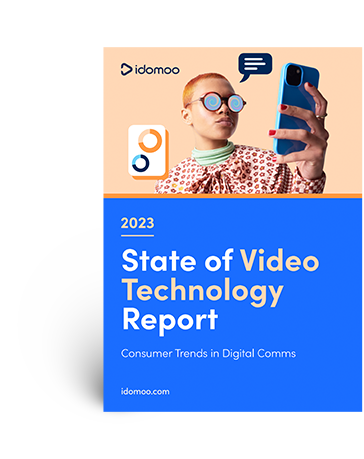Looking to improve your customer engagement strategy? In a world driven by data, understanding and connecting with your audience requires diving into the numbers that matter — the metrics that reveal how your customers engage with your brand.
From clicks and conversion to likes and loyalty, we’ve got a roundup of 29 customer engagement metrics that every marketer should have on their radar. Whether you’re a seasoned pro or just starting out, tracking and analyzing these user engagement metrics will empower you to measure, analyze and fine-tune your strategies for success.
First up? The key metrics for understanding social media engagement.
1. Social Media Impressions
Social media impressions refer to the total number of times your content is displayed on a social platform. It’s a measure of how often your post pops up on users’ screens, giving you insight into the visibility and distribution of your content.
While impressions don’t tell you much about customer engagement on their own, the metric is helpful in providing context when analyzing your social media engagement.
How to find it: Most social media platforms report impressions in their analytics.
2. Social Media Reach
Your social media reach measures how many unique users see your content. Unlike impressions, reach doesn’t count multiple views by the same user. In other words, a post seen 100 times by the same user would have 100 impressions but only a reach of one.
Reach helps you understand your potential audience size, giving you a better idea of how many unique people are seeing your content. Similar to impressions, it can also give you a better understanding of your engagement level.
How to find it: Most social media platforms report reach in their analytics.
3. Social Media Engagement Rate
Your engagement rate is a measure of how much interaction your social content receives in comparison to the size of your reach or followers. It’s the key metric you need to measure if you want to know how compelling your content is to your target audience. High engagement rates often mean that your content resonates well, with people engaging with it by liking, commenting, sharing, etc.
How to find it: Most social media platforms will report your total engagement, which is the sum of all the interactions you have on a post or your account as a whole. You can then calculate your engagement rate by plugging the data into a formula. While there are different approaches to measuring engagement, the one below is the most common.
Engagement Rate = (Total Engagements ÷ Reach or Follower Count) × 100
There are also third-party social analytics tools that will report your engagement rate for you.
4. Social Media Amplification Rate
Your amplification rate is similar to your engagement rate except that focuses only on interactions where your audience shares your content.
Your content being shared frequently is like having your customers become your brand advocates, broadcasting your message to their networks. A higher amplification rate implies that your audience is eager to spread your content, extending your reach even further.
How to find it: Some third-party social analytics tools may report your amplification rate but you can also calculate it yourself.
Amplification Rate = (Total Shares, Retweets, Etc. ÷ Total Followers) × 100
5. Social Media Follower Growth Rate
This metric tells you how quickly your follower count is increasing over a specific period. It’s a helpful measure of how effective your content strategy and audience-building efforts are. Rapid growth suggests your content is appealing and attracting new followers while a decline suggests that your customer engagement strategy needs some work.
How to find it: Most social media platforms report your follower growth rate. You can also calculate it with the following formula.
Follower Growth Rate = (Change In Follower Count ÷ Previous Follower Count) × 100
6. Ad Impressions
Want to know how effective your ads are at engaging customers? Start with tracking ad impressions, or the total number of times an advertisement is displayed to users.
While impressions don’t directly measure engagement, they give you a clear idea of your ad’s distribution. A higher number means your ad is being seen more frequently. Ad impressions are also needed for calculating your click-through rate, which is a key ad engagement metric.
How to find it: You’ll often find total impressions in your advertising platforms’ dashboards and analytics reports.
7. Ad Click-Through Rate (CTR)
Your ad’s click-through rate is the percentage of people who click on your ad after seeing it. This is a vital metric since it tells you how attractive your ad is. A higher CTR suggests better engagement while a low CTR might indicate that your ad isn’t resonating with your audience.
How to find it: Look for CTR in your ad platform’s analytics, where it’s usually clearly displayed. To calculate it yourself, use the following equation.
Click-Through Rate = (Total Clicks ÷ Total Impressions) × 100
8. Email Open Rate
Your email open rate is crucial in measuring the effectiveness of your email campaigns. It refers to the percentage of recipients that open your email. It’s a fundamental gauge of how successful your subject lines, sender name and messaging are at grabbing recipients’ attention. The higher your open rates, the better.
How to find it: Most email marketing platforms provide open rate data in their reports. See the formula below.
Email Open Rate = (Emails Opened ÷ Emails Delivered) × 100
Keep in mind that recent privacy changes, like the Mail Privacy Protection setting introduced in iOS 15, have made it possible for email trackers to be easily blocked. Considering iOS has more than a 50% market share in the U.S. and a 28.4% share in the global market, this has had a major consequence on how accurately we can measure engagement.
Many marketers have adjusted by prioritizing different KPIs, such as clicks and conversions, or focusing more on data from non-Apple users. Nonetheless, just be aware that your open rates will generally be underreported if your audience includes iOS users.
9. Email Click-To-Open Rate (CTOR)
Your email’s click-to-open rate is the percentage of recipients who clicked on a link within your email after opening it. This metric gives you insight into the relevance and effectiveness of your content since it focuses on engagement within the email. Essentially, CTOR can help you determine if optimization is needed on the subject line or the actual email creative.
Be careful not to confuse CTOR with your email click-through rate (CTR). Email CTR is based on the total number of delivered emails, while CTOR focuses only on opened emails.
For example, if your emails are delivered to 10 people, opened by 6 and a link is clicked by 3, then your CTOR is 50% (3 clicks out of 6 opens) while your CTR is 30% (3 clicks out of 10 deliveries).
Though the two are slightly similar, CTOR gives you much more insight into the effectiveness of your content since it only considers recipients who actually opened the email.
How to find it: Your CTOR will likely be reported by your email marketing platform but you can also calculate it yourself using its formula.
Click-to-Open Rate = (Total Clicks ÷ Total Unique Opens) × 100
10. Email Forward/Share Rate
This metric is the percentage of recipients who forward or share your emails with others. Similar to your amplification rate, this reveals how share-worthy your emails are. A high forward/share rate means your audience is going beyond just opening your emails and actually extending your reach by sending it to others.
How to find it: Most email marketing platforms provide data on forwarded or shared emails in campaign reports.
11. Email Subscriber Growth Rate
This metric is the rate at which your email subscriber list is expanding. It’s essential for understanding whether your acquisition and email marketing efforts are successfully attracting new subscribers and expanding your potential audience.
How to find it: While your email marketing platform will likely report this metric for you, it can also be calculated with the below formula.
Subscriber Growth Rate = (Change in Subscribers ÷ Previous Subscriber Count) × 100
12. Email Unsubscribe Rate
Your unsubscribe rate reveals the percentage of recipients who choose to opt out of your email communications after receiving them.
A high unsubscribe rate might suggest that your content isn’t aligning with recipients’ interests or that your content schedule is overwhelming. Monitoring this metric helps you fine-tune your email content, frequency and segmentation strategies so that you can keep your subscribers happy and engaged.
How to find it: Email marketing platforms commonly provide email unsubscribe rate data within their campaign analytics. You can also use a formula to calculate it.
Subscribe Rate = (Number of Unsubscribed Recipients ÷ Emails Delivered) × 100
13. Monthly Website Visitors
If you want to better understand how people are engaging with your website, a good place to begin is by tracking the total number of visitors to your website within a month. Doing so will help you get a picture of the overall interest and visibility of your website.
How to find it: Most website analytics tools, like Google Analytics, provide a clear count of monthly visitors.
14. Website Pageviews
Pageviews refer to the total number of times individual pages on your website are viewed. This number tells you how popular specific content and sections of your site are, allowing you to know exactly what pages resonate the most with your target audience.
How to find it: Most website analytics tools generate pageview data for each page on your site.
15. Average Time on Page
Average time on page measures how long, on average, visitors spend on a specific page. This metric offers insights into content engagement and whether visitors find that page’s content interesting enough to stay. The longer the average time on page, the more engaged your visitors are assumed to be.
How to find it: This metric will often be reported by your website analytics tools.
16. Average Session Duration
Your average session duration is the average time a user spends on your site in a single visit. It’s a helpful indicator of how compelling your site is as a whole. Are your visitors staying long enough to explore your content in-depth? Or do their sessions last just a few minutes?
How to find it: Your website analytics tool should calculate and report it for you. For reference, it’s most often calculated via the following formula.
Average Session Duration = Total Duration Of All Sessions ÷ Total Number Of Sessions
17. Pages per Session
Pages per session refers to the average number of pages a user views within a single website visit. It’s another metric that can give you insight into the effectiveness of your web content. Are users browsing through multiple pages of your website each time they visit? Or are they leaving after only spending time on just one or two pages?
How to find it: This is a standard metric reported by most website analytics tools.
18. Website Bounce Rate
Your bounce rate measures the percentage of visitors who “bounce,” or leave your site after viewing only one page.
Keeping an eye on this metric can help you identify potential problems with your site. Most likely, a high bounce rate suggests that visitors didn’t find what they were looking for, signaling potential issues with content relevance or user experience.
How to find it: Most website analytics tools provide the total bounces and bounce rate for each page and the site as a whole. Your bounce rate can also be calculated with the below formula.
Bounce Rate = (Total Bounces ÷ Total Visits) × 100
19. Website Exit Rate
Your website exit rate represents the percentage of visitors who leave your site from a specific page. Unlike bounce rate, this metric includes users who viewed multiple pages before exiting. It helps identify problematic pages that may be leading to user drop-offs.
How to find it: Website analytics tools calculate the exit rate for individual pages.
20. Returning Users and New User Sessions
Returning users are those who have visited your site more than once over a specific period of time. Tracking this metric helps gauge how well you’re retaining your audience and encouraging ongoing interest. Having a consistent number of returning users suggests that you have a loyal and engaged audience.
On the other hand, new user sessions refers to the number of first-time visitors to your site. This metric is great for understanding the reach and success of your efforts in attracting new audiences.
How to find it: Your website analytics tool should distinguish between new and returning users in its reports. However, because privacy settings vary from user to user, be aware that numbers may not be entirely accurate. For instance, if a visitor clears their browser cookies, they’d be identified as a new user even if they’ve been on your website recently.
21. Video Completion Rate
Post on
Video completion rate measures the percentage of viewers who watch your video from start to finish. In other words, it tells you just how effective your video content is at keeping your audience’s attention.
A high completion rate suggests that your video content is resonating with viewers and keeping them engaged throughout. For instance, with the help of personalization, Mercedez-Benz Finance achieved impressive completion rates with Personalized Videos sent to new customers: 70% for an onboarding welcome video and 96% for an end-of-contract one.
On the other hand, a low completion rate is a sure indicator that more needs to be done to keep your viewers’ attention.
How to find it: Access your video platform’s analytics, where the percentage of viewers who completed the video is typically reported.
Video Completion Rate = (Total Completed Video Views ÷ Total Video Starts) × 100.
22. Average View Duration
Average view duration refers to the average amount of time viewers spend watching your video. This metric offers deeper insights into customer engagement by revealing how long audiences stay engaged with your videos.
A longer average view duration signifies strong engagement, suggesting that viewers find value in your content and are willing to invest their time. On the flip side, a short average view duration likely means that your content is failing at keeping the audience’s attention.
How to find it: If the platform you used to share the video on doesn’t report this metric, you can calculate it yourself as long as you have the video’s total watch time and total number of views.
Average View Duration = Total Watch Time ÷ Total Views, including Replays
23. Monthly and Daily Active Users
Monthly Active Users (MAU) and Daily Active Users (DAU) are essential metrics to track customer engagement within an app.
Monthly Active Users (MAU) is the number of unique users who engage with your app at least once during a given month. It’s a good reflection of your app’s overall popularity and can be used to measure the effectiveness of your marketing campaigns in attracting new users over time.
Daily Active Users (DAU) indicate the number of users who interact with your app within a single day. It’s a powerful metric to measure customer loyalty and your app’s “stickiness,” or its ability to keep users engaged and coming back. A high DAU often signifies that your app is an integral part of users’ daily routines.
These metrics provide insights into how frequently users interact with your app, reflecting its popularity and stickiness. They’re also helpful for assessing the impact of your marketing strategies and understanding how effective you are at engaging users in-app.
How to find them: You should be able to see both metrics in your app’s analytics dashboard.
24. Conversion Rate
A conversion rate is the percentage of website visitors, ad viewers, email openers, etc. who take a desired action. This action could be anything from signing up for a newsletter to filling out a form to making a purchase — whatever you decide to define it as!
In other words, your conversion rate measures how effective your efforts are in driving meaningful engagement and tangible results. A higher conversion rate indicates that your efforts were successful at converting your audience from passive viewers to engaged consumers.
How to find it: Once you’ve clearly defined what a conversion is for a particular campaign or effort, you can calculate your conversion rate with the formula below.
Conversion Rate = (Total Conversions ÷ Total Viewers) × 100
25. Customer Retention Rate
Your customer retention rate is the percentage of customers who continue to do business with your brand over a given period of time. This metric provides insight into your ability to maintain positive customer relationships, with a high retention rate implying that your brand is successfully encouraging long-term engagement and loyalty.
How to find it: You can compute your retention rate by using the below formula, and learn more about what to do next in our beginner’s guide to calculating retention rate.
Retention Rate = ((CE – CN) ÷ CS)) × 100
CE = number of customers at end of period
CN = number of new customers acquired during period
CS = number of customers at start of period
26. Customer Churn Rate
Customer churn rate is essentially the opposite of your retention rate. It indicates the percentage of customers who stop using your products or services within a given period.
Measuring and analyzing churn helps to shed light on why you might be losing customers, allowing you to identify ways to improve the customer experience and keep them engaged. Knowing your churn rate also lets you estimate how many new customers you need to acquire to keep up your revenue stream.
How to find it: You can use the below formula to calculate your customer churn rate.
Churn Rate = (Total Customers Lost ÷ Total Customers) × 100
27. Customer Lifetime Value (CLTV)
Customer Lifetime Value (CLTV or CLV) estimates the total revenue a customer is expected to generate for your business over their entire engagement lifecycle.
This metric highlights the importance of not just acquiring new customers but nurturing and retaining them for long-term profitability as well. A higher CLV indicates that your engagement efforts are creating loyal customers who continue to provide value over time.
How to find it: While there are many different approaches to calculating customer lifetime value, the below formula is a common example.
Customer Lifetime Value = Customer Value* × Average Customer Lifespan
*Customer Value = Average Purchase Value × Average Number of Purchases
28. Customer Satisfaction Score (CSAT)
Your Customer Satisfaction Score, or CSAT, is a measure of how content your customers are with your products or services. Since satisfied customers are more likely to stay loyal and refer others, CSAT is a vital metric for sustaining business growth.
By proactively measuring CSAT, you can assess how satisfactory the customer journey is across different touchpoints, from the onboarding experience to customer support interactions.
How to find it: CSAT scores are usually determined through post-interaction surveys or customer feedback forms, where customers rate their satisfaction level on a numerical or qualitative scale.
29. Net Promoter Score (NPS)
The Net Promoter Score (NPS) measures customer satisfaction and loyalty by asking a simple question: “On a scale of 0 to 10, how likely are you to recommend our product/service to others?”
Your NPS gives you an inside look into customer sentiment and engagement, letting you know how well you’re doing at building a customer base that’s willing to be advocates for your brand and provide referrals. The higher your NPS score the greater the percentage of promoters you have among your customers.
How to find it: From their responses, customers are categorized as promoters (those who marked a score of 9 or 10), passives (score of 7 or 8) or detractors (score of 0 to 6). Your NPS is then calculated with the below formula. The score will range from -100 to +100.
Net Promoter Score = % of Promoters – % of Detractors
From Insights to Action
So there you have it — a straightforward rundown of 29 essential metrics to help you measure customer engagement. Each metric reveals a unique facet of your audience’s engagement patterns, allowing you to fine-tune strategies and foster stronger connections.
And if you’re interested in taking your customer engagement to the next level, consider taking advantage of Personalized Video. We’ve seen brands achieve results like 10x engagement, 5x social sharing and 2 million newsletter signups by embracing personalization and visual storytelling to connect with their customers.
Want to learn more? Reach out today and we’ll show you what Personalized Video can do for you.





